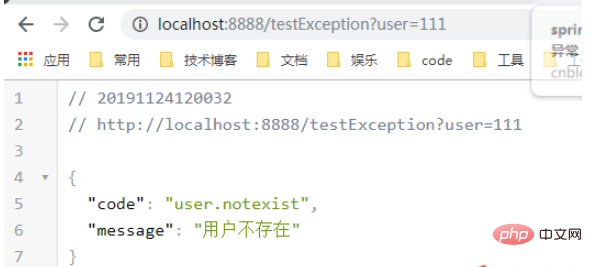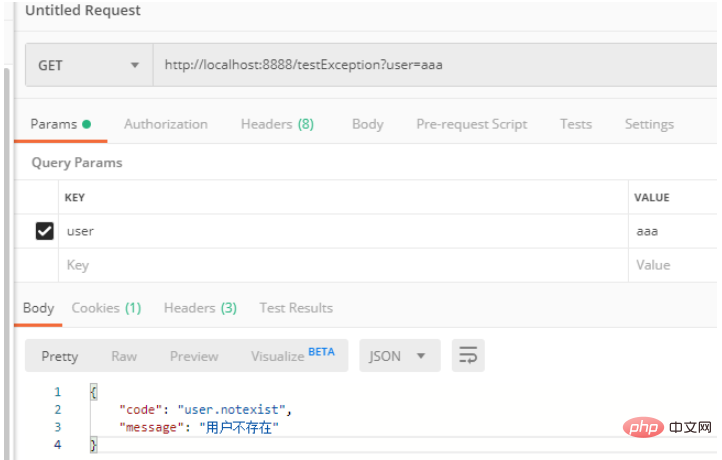Springboot2.0中如何处理自定义异常并返回json
- 王林转载
- 2023-05-10 22:19:101460浏览
1. 编写自定义异常类
package cn.jfjb.crud.exception;
public class UserNotExistException extends RuntimeException {
public UserNotExistException() {
super("用户不存在");
}
}
2. 处理自测试异常
package cn.jfjb.crud.handler;
import cn.jfjb.crud.exception.UserNotExistException;
import org.springframework.web.bind.annotation.ControllerAdvice;
import org.springframework.web.bind.annotation.ExceptionHandler;
import org.springframework.web.bind.annotation.ResponseBody;
import java.util.HashMap;
import java.util.Map;
@ControllerAdvice
public class MyExceptionHandler {
@ResponseBody
@ExceptionHandler(UserNotExistException.class)
public Map<String, Object> handleException(Exception e) {
Map<String, Object> map = new HashMap<>();
map.put("code", "user.notexist");
map.put("message", e.getMessage());
return map;
}
}
3. 配置application.yml文件(不配置的话无法获取exception)
server: error: include-exception: true
4. 编写测试
package cn.jfjb.crud.controller;
import cn.jfjb.crud.exception.UserNotExistException;
import org.springframework.stereotype.Controller;
import org.springframework.web.bind.annotation.RequestMapping;
import org.springframework.web.bind.annotation.RequestParam;
@Controller
public class HelloController {
@RequestMapping({"/testException"})
public String testException(@RequestParam("user") String user) {
if (user != "aaa") {
throw new UserNotExistException();
}
return "index";
}
}


以上是Springboot2.0中如何处理自定义异常并返回json的详细内容。更多信息请关注PHP中文网其他相关文章!
声明:
本文转载于:yisu.com。如有侵权,请联系admin@php.cn删除

